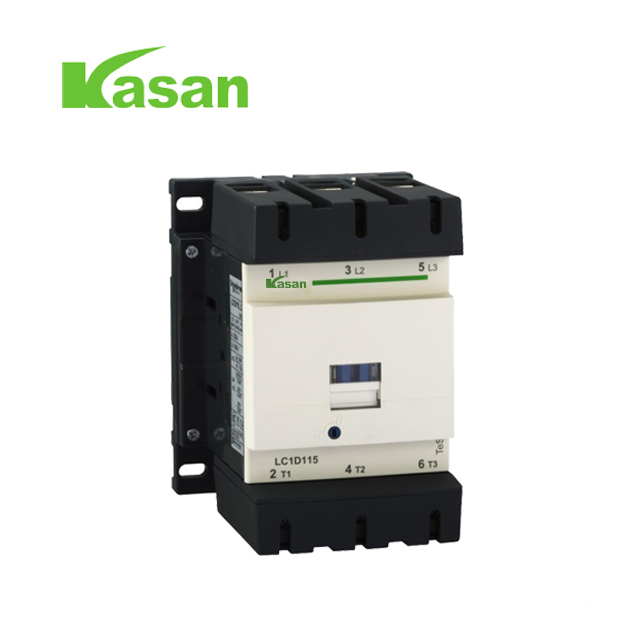Understanding AC Contactors: Essential Components for Efficient Electrical Control
2025-01-04
In modern electrical systems, the need for reliable and efficient switching mechanisms is crucial, especially when dealing with high-voltage equipment like motors, lights, and HVAC systems. This is where AC contactors come into play. Whether in residential, commercial, or industrial settings, AC contactors are key components that control the flow of electricity and help ensure the safe operation of electrical circuits. In this blog, we’ll dive into what AC contactors are, how they work, and why they are vital in electrical systems.
What is an AC Contactor?
An AC contactor is an electrically controlled switch used to control the flow of electricity in alternating current (AC) circuits. It is designed to open or close electrical circuits remotely or automatically, often in response to a control signal. AC contactors are widely used in applications such as controlling motors, lighting systems, heating elements, and other heavy electrical loads.
Unlike manual switches, which require human intervention to turn devices on or off, an AC contactor is operated through an electromagnet. When energized, this electromagnet pulls a movable armature, causing contacts to close and allow the flow of electricity through the circuit. Once the electromagnet is de-energized, the contacts open, cutting off the electrical flow.
How Does an AC Contactor Work?
The operation of an AC contactor can be broken down into several key steps:
1. Electromagnetic Coil Activation: When a control voltage is applied to the coil, it generates a magnetic field. This magnetic field pulls the armature (a movable metal part) toward the coil.
2. Contact Closure: As the armature moves, it pushes the contact points together, closing the circuit. This allows current to flow through the circuit and power the connected equipment, such as motors, lights, or other electrical devices.
3. Contact Opening: When the control voltage is removed, the magnetic field collapses, and the armature returns to its original position. This causes the contacts to open, interrupting the electrical flow and turning off the connected equipment.
4. Arc Suppression: During the opening and closing of the contacts, electrical arcs can form due to the sudden interruption of electrical current. AC contactors often include mechanisms for arc suppression to protect the contacts and ensure long-term reliability.
The ability to control large electrical loads with a relatively small control signal is what makes AC contactors so versatile and widely used.
Key Components of an AC Contactor
An AC contactor is made up of several key components that work together to control electrical circuits:
1. Coil: The electromagnet responsible for creating the magnetic field when energized.
2. Armature: The movable metal piece that is attracted to the coil, closing or opening the contacts.
3. Contacts: Metal pieces that make or break the circuit. These can be normally open (NO) or normally closed (NC), depending on the specific design.
4. Spring: Often used to return the armature to its original position once the coil is de-energized.
5. Housing: The outer casing that protects the internal components from dust, moisture, and physical damage.
6. Auxiliary Contacts: Additional contacts that can be used for signaling or controlling secondary circuits.
Types of AC Contactors
There are several types of AC contactors, each designed to handle specific applications and environments. Some of the most common types include:
1. Standard AC Contactors: These are the most widely used contactors and are designed for general applications such as controlling motors, lights, and HVAC systems. They come in a variety of sizes and voltage ratings to suit different needs.
2. Motor Contactors: These contactors are designed specifically for motor control applications. They are often equipped with thermal overload protection to safeguard motors against excessive currents and overheating.
3. Lighting Contactors: Used to control large-scale lighting systems, these contactors are typically found in commercial or outdoor applications where high-voltage lighting needs to be switched on and off.
4. Reversing Contactors: These contactors are used to reverse the direction of motors, commonly found in systems like conveyor belts or industrial machinery where direction change is needed.
5. Magnetic Star-Delta Contactors: Used in applications requiring star-delta motor starting, these contactors provide a smooth and efficient way to start large motors and protect them from electrical surges.
Why Are AC Contactors Important?
AC contactors are crucial components in a wide range of electrical systems for several reasons:
1. Safety: By allowing electrical circuits to be safely controlled remotely, AC contactors reduce the risk of human error and protect users from the dangers of high-voltage equipment. They are often designed with overload protection and arc suppression features, enhancing the safety of the system.
2. Efficient Power Management: AC contactors help control the flow of electricity to large equipment, ensuring that only the necessary power is supplied when needed. This leads to energy efficiency and reduces unnecessary wear and tear on electrical devices.
3. Reliability and Durability: With proper maintenance, AC contactors can last for many years. They are designed to withstand frequent switching and high inrush currents, making them ideal for industrial and commercial applications that require high reliability.
4. Remote Control: Many AC contactors can be integrated into automation systems, allowing remote control of electrical circuits. This is especially important in large facilities or complex systems where equipment needs to be monitored and controlled from a central location.
5. Flexibility: AC contactors come in various sizes, configurations, and voltage ratings, making them highly versatile. They can be used for a wide range of applications, from small household appliances to large industrial motors.
Applications of AC Contactors
AC contactors are used in a variety of industries and applications, including:
1. HVAC Systems: AC contactors are used to control the compressors, fans, and other components in heating, ventilation, and air conditioning systems.
2. Motor Control: In industrial settings, AC contactors are used to start and stop electric motors. These motors may power machinery, conveyor belts, pumps, or other heavy equipment.
3. Lighting Systems: For both residential and commercial applications, AC contactors are used to control large lighting circuits, providing reliable on/off control.
4. Pumps and Compressors: AC contactors control pumps and compressors in a variety of applications, from water treatment facilities to refrigeration systems.
5. Refrigeration Systems: AC contactors are widely used to control compressors and fans in refrigeration systems, ensuring efficient operation and temperature regulation.
Conclusion
AC contactors are indispensable in modern electrical systems, providing reliable and efficient switching capabilities for a wide range of applications. Whether in industrial machinery, HVAC systems, lighting control, or motors, they offer a safe and effective way to control high-voltage circuits. By understanding how AC contactors work and where they are used, you can appreciate their essential role in maintaining the smooth operation of electrical systems. With their ability to handle frequent switching, protect against overloads, and provide remote control options, AC contactors are truly a cornerstone of modern electrical infrastructure.



